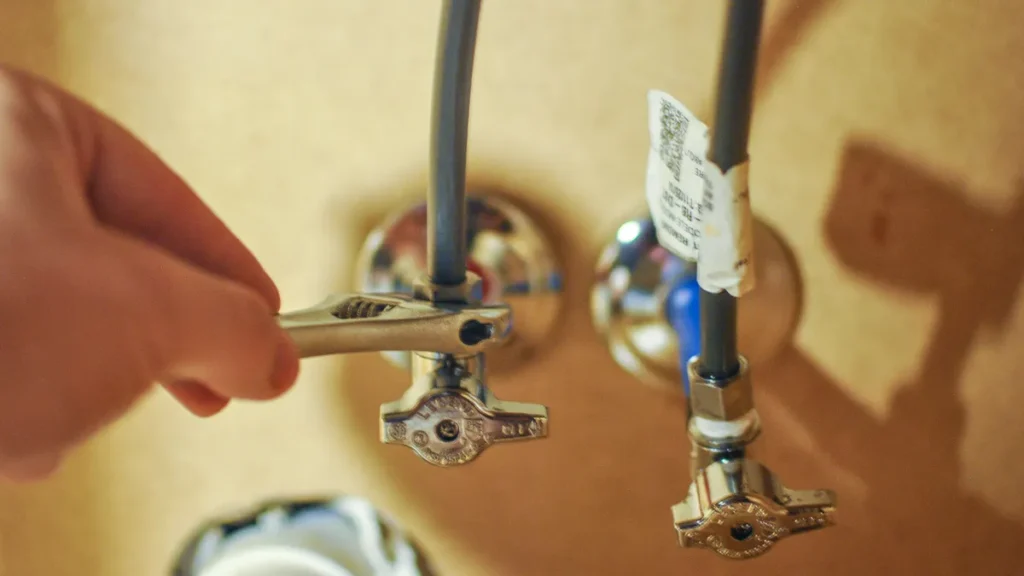Ever dream of launching your own personal chef business and turning your love for food into a profitable career. The freedom and financial rewards of taking their cooking into their own hands is increasingly appealing to many talented home cooks and professional chefs. A home based culinary venture is much more flexible and creative than the typical restaurant job with its long hours and fixed routine. The demand for private chef services is also growing as working people increasingly turn to healthier alternatives to fast food. As a matter of fact, meal prep services are now the trend with health-conscious customers who believe in the value of freshly made food, but are too busy to cook. There’s never been a better time, then, to be a culinary entrepreneur. This in-depth guide will take you through everything you need to know from knowing what personal chefs are.
Understand What a Personal Chef Really Does
Before you spend a lot of your time and money on personal chef plans, you need to know what you’re getting into. There are many misconceptions from people who would like to enter the culinary business that can create unrealistic expectations.
Personal chef vs private chef vs caterer
While these three culinary experts are often mixed up with one another, they have very different roles. A personal chef usually has several clients that they work for, they prepare meals for these clients in the clients’ home, in the chef’s kitchen or in a rented commercial kitchen. They might cook once a week or once a month and stock up to eat throughout the week or month. Private Chefs, on the other hand, exclusively work for one client or household, most times on a salary and with benefits. They typically live on the premises or close by, making the family’s meals day in and day out, and sometimes accompanying their employers on trips out of town. Private chefs can make between $68,000 and $350,000 a year based on experience and clientele.
What services you can offer
As a personal chef entrepreneur, you may offer a variety of services based on your abilities and your clients:
- Regularly scheduled meal preparation: The one that’s become most popular is where you make several meals and clients can reheat over the week.
- Special occasion dining: Cooking gourmet meals for small ·Perfect for Fine dining for small gatherings or dinner parties.
- Cooking classes: Instructing clients on how to cook certain meals or cuisines
- Specialized diet preparation: Cooking meals for the clients with dietary constraints or special requirements
- Vacation chef services: Cooking for clients when they’re on vacation in rental homes
- Which you emphasize depends on your culinary experience and specialty. Some personal chefs are also experts in particular dietary needs, such as vegan, vegetarian or gluten free eating or in certain types of cooking, such as pastries or breads.
Common misconceptions
One of the best myths that exists is that personal chefs only cook for rich and famous people. But most of the clients are regular families or busy professionals willing to trade money for time. They may know how to cook, but they’d rather spend their limited amount of free time with family than in front of the stove. Another common misunderstanding is that you have to have culinary school training to become a personal chef. While formal education is important, many of today’s successful personal chefs inherited family traditions, apprenticed or worked their way up through restaurant ranks. There is a fallacy that personal chefs are out of reach for many people.
Test the Waters Before You Launch
A personal chef business is more than just a matter of culinary skill it also requires real world experience in the field. Before you go live with your services, try testing it out to gain confidence and develop a structure.
Cook for friends and family
A great way to start is by cooking for your friends and family. Offer to cook meals for friends and family maybe prices are just groceries plus a small service fee, so that you can resemble a real client. This initial practice.
- Develop and perfect your recipes
- Corn your own grocery store or farmers’ market corn, and also test how dishes fare given a few days in the refrigerator.
- Boost your self-esteem in the kitchen.
- Creating your word-of-mouth referrals Word of mouth can also help you reach new customers.
Many successful personal chefs launched their service by trying it out first with small dinner parties or for special occasions. For the past hour, you’ve been handing around the menu and teasing your friends by the meal that’s coming. Now, the time is right to put it into practice After each session, analyse how it went. Were your guests pleased?
Practice in unfamiliar kitchens

Being the cook in someone else’s kitchen is not quite the same as working in your own space. Cook in different kitchens for the experience of being flexible, which is very important as a personal chef. During these practice sessions:
- practice sessions:
- Carry what you need to work in comfort
- Let’s measure how you spend your time on each phase of service and your time doing other things (shopping, prepping, cooking, clearing.
- Make very specific grocery lists for each cooking session
- Write out a timetable of how each session will go ahead
- Train unaided just like you were honed professionally.
“Find a neighbor, a relative, someone who has an anniversary or a birthday, and just offer to cook for them. It could be something as simple as a two-course dinner to the experience of carrying all your stuff in other people’s houses too.
Get feedback and improve
Getting real feedback is crucial to the growth of your personal chef business. During your practice sessions:
- Notice which plate items tend to get the biggest reaction
- Be aware of any constructive criticism on your timing or serve.
- Request suggestions for improvements.
Just keep in mind you’ll be prepping and cooking, while clients are watching and interacting with you, as a personal chef. “You need to move fast and work through whatever shows up,” she said, whatever that may be, “a dog or a kid running through the kitchen, five things happening, some people asking a lot of questions. By training for such episodes, you learn to control the inevitable. As soon as you begin booking real clients, however, reviews are golden. Many clients find personal chefs through reviews, so gathering.
Set Up the Business Side

After you’ve tried out your food concept, the next big thing to do is solidify the formal business groundwork. The legal and financial structure you select now can affect everything from your taxes to your personal liability as your personal chef business expands.
Choose a business structure (LLC, DBA, etc.)
Most culinary entrepreneurs start by deciding between a sole proprietorship (with a DBA or Doing Business As and a Limited Liability Company (LLC). While most personal chefs run their business as sole proprietorships because of low registration fees and simplicity, there are advantages an LLC can offer that make having one worth considering. An LLC offers crucial limited liability protection, protecting your personal assets home, car, savings if your business is sued or fails to pay a debt. This protection is especially important for food service businesses that are exposed to specialized risks from allergic reactions, food safety claims or and other harmful foodborne illnesses.
Get insurance and licenses
Regardless of your business structure, proper insurance coverage remains essential. Consider these critical policies:
- Product liability insurance: Specifically protects against harm allegedly caused by food you prepared Insurance costs typically run about $200 annually, with policies available from $45 to $175 per hour depending on coverage needs].Additionally, obtain necessary licenses and permits. Requirements vary by location, but typically include:
- Business license from your county clerk’s office or city government
- Food safety certification (like Serve Safe)
Decide on pricing and services

Pricing for your personal chef service Pricing your personal chef service is a combination of your costs, value and the marketplace. Hourly rates usually go from $45 to $150, and they are based on experience and location. An additional $30,000-$100,000 is not your personal chef business that can provide a solid annual income depending upon the exact services you provide, and the strength of your client list. As you figure your rates, keep in mind Finally, lots of fledgling chefs do research of their competitors in the area as a way of seeing what the default price points are. However, keep in mind that underpricing can hurt more than overpricing. People tend to equate low cost with low quality with personal chef services. The total startup investment for a personal chef business could range from $500 to $1,000, which includes a business license ($200), insurance ($200) and basic cooking supplies ($100).
Build Your Brand and Find Clients
Once you have established your business structure, the most important thing you can do is begin creating your brand and getting your first few clients. A professional presence is key if you want to turn your cooking skills into a successful personal chef business.
Create a simple website or social profile
Your virtual shop is your online presence. Nearly 87% of individuals use Google to find local businesses, so a website becomes essential for those prospective clients searching for personal chef services. Your website should include
- Clear contact information
- Services and pricing details
- Professional photos of your dishes
- Certifications and credentials
There are also budget website builders that provide options for food entrepreneurs, who can’t afford the monthly cost of the more premium builders.
Ask for reviews and referrals
When it comes to “social-proof,” an oldie but a goodie. It probably also explains why a lot of successful personal chefs tell us that just because you are the highest rated chef in a potential client’s area, it doesn’t mean that’s why they hired you. Since only about 25% of customers review when not solicited, asking for feedback is a must. Ask happy clients to write a recommendation on Google, Yelp and Facebook. This kind of user-recommendation gives more credibility than any ad, so it builds trust quicker your reputation, credibility among people who are in the market for a good trustworthy service.
Partner with vacation rentals or local groups
Indeed, one very successful way is to team up with holiday rental properties. For a number of established personal chefs, vacation rentals now make up as much as 90 percent of their business. Contact Airbnb and VRBO property owners directly not the platforms and ask if you can be a part of their guest welcome packages. Guests of vacation rentals are often looking for dining experiences close to home, especially for special occasions or group events.
Use a lead-generating media kit
A media kit serves as a ready-made package containing everything someone needs to work with you. This professional tool typically includes:
- Your brand story and headshot
- Service descriptions
- Client testimonials
- High quality food photos
- Contact information
A media kit is like the ultimate press kit in that it’s a pre made package of everything someone would need to work with you. This professional tool typically includes:
- Your brand story and headshot
- Service descriptions
- Client testimonials
- High quality food photos
- Contact information
Subsequent to acquiring direct clients, your media kit can also be used to land features in local publications, partnerships with other businesses in your area, and collaborations with influencers all of which are cost-effective marketing in reaching new clients. Local media Super Biz Tip: A gloriously designed media kit shines when reaching out to local media.
Stay Organized and Keep Growing

A personal cheffing business that is competent is organization and growth opportunities. Because more than cooking abilities, with the right tools and industry connections, your culinary venture could be more efficient, and more profitable, even than you ever thought possible.
Use digital tools for recipes and planning
Computerized recipe management makes sense in your kitchen and provides valuable consistency. Dedicated recipe and cookware management software allows you to save recipes to a secure, private cloud-based library, enabling you to access your recipes from anywhere. Such platforms automatically figure nutrition information, food costs and allergens essential data points.
Some software options even allow you to
Cloud-based recipe builders for food professionals, meanwhile, can do the math on all nutrition facts and allergen lists using data from national suppliers. A good platform feature within the most comprehensive Chef Software Systems would help you organize food costs and inventory, no more spreadsheets, more time efficiency.
Track your time and costs
It is also necessary to keep a watchful eye on time invested and expenses. With service provider focused digital tracking tools you’re able to:
- Create color-coded appointment calendars
- Send clients appointment reminders with an auto messaging system
- Real time monitoring to keep tabs on unpaid dues
- Receipt capture: easily snap and save photos of your receipts.
Out with the good old and in with the new Yet, beyond time management, good accounting practices contribute to accountability and professionalism in business. The good stuff will help guide you on profitability and cost effectiveness in business decisions. Most successful private chefs also keep project management tools like Trello or Asana, which help them to manage client-specific to dos, checklists and deadlines.
Join a network of chefs for support
Professional food focused organizations provide important resources and support for development. The United States Personal Chef Association (USPCA) has been offering personal chefs the day to day support, networking and information they need since 1991. As a member of these organizations, you have access to:
- One-on-one coaching with experienced chefs
- Business management education
- Culinary skills enhancement courses
- E learning websites with fresh new content regularly
- Things like Certified Personal Chef programmes
From networking to problem solving, your membership gets you access to people as passionate about food and hospitality as you are. According to one USPCA member, This group is so much more than just insurance; it’s a community of like-minded people who are passionate about food, feeding people, networking and helping each other out. A professional network that allows you to collaborate, connect, learn and share advice throughout your culinary journey!
Conclusion
Embarking on a journey by launching a personal chef business, is a flavorful culinary adventure turned career! In this guide, we’ve covered all the must dos from knowing the business to how to grow your services. Love to cook is merely the launching pad after that it’s all about knowing what to do, how to do it and revving up your enterprise with systems that work!









